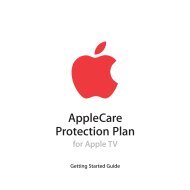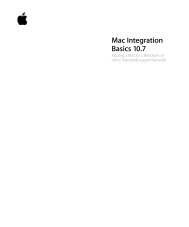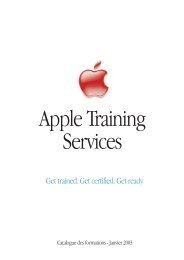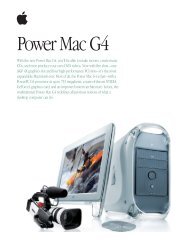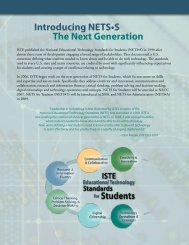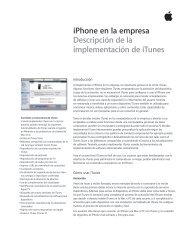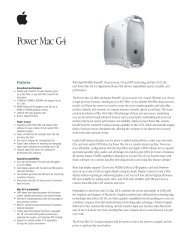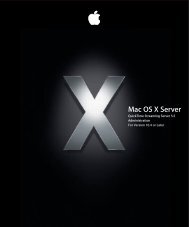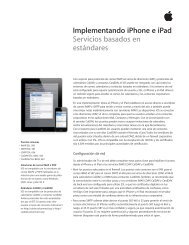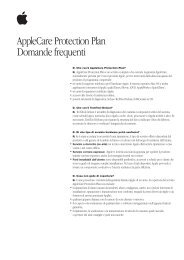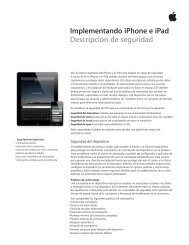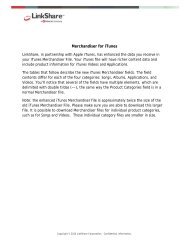In-House App Development Accelerator Guide - Apple
In-House App Development Accelerator Guide - Apple
In-House App Development Accelerator Guide - Apple
Create successful ePaper yourself
Turn your PDF publications into a flip-book with our unique Google optimized e-Paper software.
Creating an <strong>App</strong>lication Defi nition Statement<br />
Start by writing an application defi nition statement that includes the following:<br />
• The purpose behind your app<br />
• Who it’s for and how they’ll use it<br />
• Its core functionality<br />
Be sure your statement defi nes a solution and only its core functionality—not a detailed set of features.<br />
You should have a strong purpose statement that you use to fi lter every idea for a feature. Ask yourself<br />
if each feature serves the intended purpose. Then choose the fewest, most frequently used, and most<br />
appropriate features for a mobile context. You don’t want to end up with a long, unfocused list of<br />
features that are either di∑ cult to execute or don’t solve the problem. Keeping your app focused will<br />
give your users the greatest productivity in a simple-to-use package.<br />
Plan for the <strong>Development</strong> Process<br />
Typical enterprise software development projects absorb huge resources during the development<br />
phase. Using the iOS SDK and high-level Cocoa Touch frameworks, your development teams can spend<br />
less time coding and more time designing the ideal user experience. Not only does this process enable<br />
you to deliver an app for your employees more quickly, but it also helps you provide solutions that<br />
exceed your users’ expectations.<br />
Whether you use an agile development process or a more traditional waterfall method, make sure you<br />
budget time and resources to invest in the design process as a central and ongoing part of your app<br />
development e∂ ort.<br />
Establish a rough timeline of the process you envision and the roles for each stakeholder at every step<br />
along the way. This doesn’t need to be etched in stone, but it can provide a common reference point<br />
for everyone involved.<br />
Planning • Design • <strong>Development</strong> • Deployment<br />
Example: <strong>App</strong>lication Defi nition Statement<br />
Here’s what an application defi nition statement might look like, using<br />
a time tracking app for lawyers as an example:<br />
• Purpose: Track time spent and billable hours for each client case<br />
• Who it’s for: Lawyers in the fi rm who need to track billable hours<br />
• How they’ll use it: At every client meeting to start and stop billable time<br />
• Core functionality: Track and report time spent to the CRM system<br />
• Consolidated defi nition statement: <strong>App</strong> for lawyers to track time and billable<br />
hours for each client<br />
• Features that fi t the defi nition: A start/stop watch; background tracking/<br />
processing; server integration with CRM system; client record lookup for<br />
associating time tracked with client/case; online/oπ ine syncing based on<br />
network connectivity<br />
• Example of features that don’t fi t the defi nition or exceed the project scope:<br />
Alerts for new cases in trial; document lookup for legal reference; map of<br />
client locations; patent lookup interface<br />
Quick Tip: Crowdsourcing<br />
Genentech knew that great app ideas can come from anywhere and anyone,<br />
so they created a crowdsourcing model that takes employee suggestions for<br />
apps they’d like to see developed internally. They have since created the top<br />
fi ve requested apps to extraordinary user satisfaction and adoption.<br />
5



